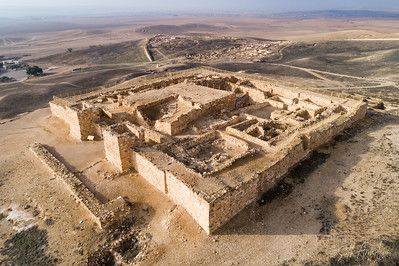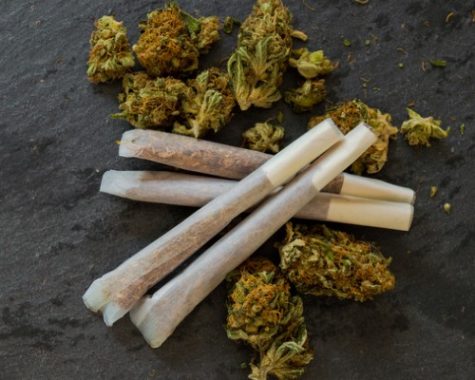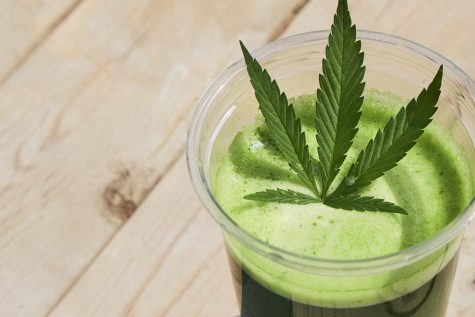Israeli scientists discover ancient cannabis traces in sacred temple

Did the ancient Jews use weed in their religious practices? Based on what a team of Israeli archaeologists have unearthed, quite possibly so. A discovery procured from a historic temple located in southern Israel has provided evidence of “the use of mind-altering substances as part of cultic rituals in Judah.”
This is what was written in a recently-published research paper, featured in the academic journal, “Tel Aviv: Journal of the Institute of Archaeology of Tel Aviv University.” The findings provide solid proof, the archeologists say, that the ancient Jews once used cannabis at this 8th-century B.C. shrine at Tel Arad.
Lead author of the study, Eran Arie, described his and his team’s findings as the “first time we see psychoactive substances in Judahite religion.” In order to carry out their research, Arie and the archaeologists analyzed plant residue that had accumulated on ancient artifacts from the shrine.
No other evidence has been uncovered to confirm the use of hallucinogenic substances among the ancient Jews. Moreover, the temple in which the archaeologists found ancient cannabis in Israel is believed to have been the first to welcome practicing Jews in Jerusalem.
Ancient cannabis in Israel discovered as a result of archaeological excavations
Located approximately 35 miles south of Jerusalem, Tel Arad dates back to circa 950 BCE. Enclosed by mountainous terrain known as “the Arad Plain,” the sanctuary was devoted to the Kingdom of Judah. What initially got archaeologists’ attention during early research in the 1960’s was the shrine’s likeness to the biblical temple in Jerusalem.
Two unidentified black deposits were discovered on the inner sanctum section of Tel Arad, where two limestone altars can be found. Although tests were conducted in the past to figure out what the separate piles of black accumulation were, previous results could not be determined. Fortunately, things have since become clearer, with recent chemical analysis of the samples – now concealed within Israel Museum’s walls – showing that the altars contained two different types of substances.
Based on the results, which were revealed after a team of scientists from Israel’s Hebrew University and Technion Institute conducted their chemical investigations into the black residue, one altar contained traces of the aromatic incense resin frankincense, whereas the other tested positive for cannabis’ psychoactive compounds.
It’s likely, the researchers say, that both substances would have been considered “sacred” or “holy” since they were both found on altars. Since frankincense is described in the Bible as being an option for incense sacrifice throughout Jewish temples, the evidence supporting ancient cannabis in Israel is stacking up.
Ancient cannabis in Israel was likely imported, say archaeologists
Delving further into their investigation, the archaeologists wanted to determine where the ancient cannabis in Israel may have been sourced from. Because no trace of cannabis pollen or seeds has been uncovered in the ancient Near East, the Israeli researchers concluded that the probability of Jews transporting cannabis across trading routes is highly likely.
To be more specific, the team hypothesized that ancient cannabis in Israel would probably have been hauled across long trafficking routes in the form of hashish — better known as “resin” in the U.S. This potent, inhalable form of cannabis is made from the residue – or “kief” – that naturally falls from the flowers of unpollinated and mature female plants. The “kief” is then pressed into a waxy final product.
“Here, the official state religion of the kingdom of Judah was using this substance,” claims Arie, who is also an Iron Age archaeology curator at the Israel Museum in Jerusalem. He and his team confirmed that the cannabis would have been lit on top of a piece of dried animal dung, which Arie says may possibly have been a method of worship in Jerusalem’s biblical temple.
Arie’s theory is supported by archaeology professor Yossi Garfunkel. While he did not conduct his study alongside Arie and the archaeologists/researchers, he noted how opium and hallucinogenic use may have provided individuals with a better opportunity to get in touch with the “higher realms”.
Garfunkel told reporters that ritual wine consumption among practicing Judaists, combined with the fact that ancient opium use has been detected in various other parts of the region, offers plenty of proof that alternative substances could have been “a desirable thing to get into ecstasy and connect with God.”







